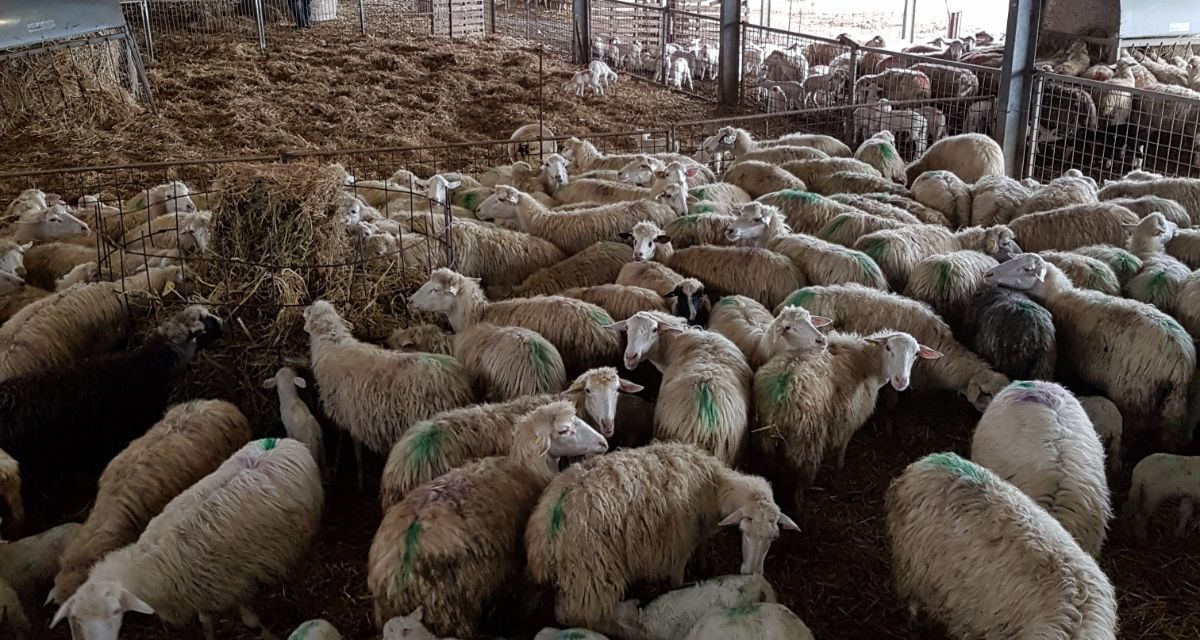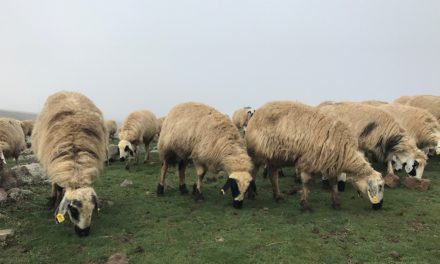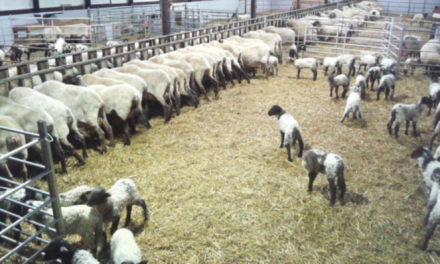This post is also available in:
![]()
![]()
![]()
![]()
![]()
Dairy or/and meat sheep: Dairy
Source of information: attached leaflet, scientific literature, practice
Level of the solution: Practical
Aim: to lower the loss of ova, embryos and fetuses in dairy ewes
Description:
Feeding of pregnant ewes is overall overlooked by farmers who tend to consider the specific needs of pregnancy only in the last week before lambing. This brings about a loss of putative lambs during the early phase of pregnancy. Moreover, the farmers tend to avoid grouping, therefore barren ewes are fed at the same level than ewes bearing twins or triplets. To reduce this inefficiency a three-step process is suggested:
- Step 1: during the first mating month, mated ewes are marked and identified using rams harnessed with colored pastels. Feeding is aimed at reducing embryo losses, avoiding marked drops in energy and protein levels, adjusting the latter by monitoring milk urea concentration. Heat stress should be prevented offering fresh water and shadowed areas as needed.
- Step 2: during mid-pregnancy (day 40-50) ewes are scanned to confirm pregnancy, determine expected lambing date and assess litter size. On day 60 after the mating days ewes are BC scored. Ewes with BCS ≤ 2.5 are submitted to a 60 day recovery plan (e.g. + 200 g/day of a pelleted concentrate). Adequacy of diet for CP is checked, taking into account the role of some amino-acids in fetal development.
- Step 3: on day 100-120 ewes are divided into two groups on the basis of the expected lambing date (“close to lambing” and “far” group) A further group can be set by distinguishing single from double bearing ewes if expected prolificacy is around 1.5. A transitional feeding plan is then applied to the “close” group, gradually increasing the diet nutritional density and supplementing with salts and vitamins (Se and Vit. E, in particular).
Expected benefits: lower loss of ova, embryos and fetuses. Efficient nutrition, better preparation to lambing.
Prerequisites and/or limits (knowledge, training on BCS method, software to key and process BCS data, cost of grouping, cost of extra-supplements.
Tips & Tricks:
- Ewe nutrition for optimum lamb birth weight
- Producing high feed value silage
- Smartphone recording tool
- Using yokes for BCS grouping
- Calibrated bucket
- Tasting lupin seed
- BCS grid for dairy sheep
- Sentinel breeds to monitor BCS
- Use of technology for productivity
Expected impacts:
|
Stakeholder Perception for Implementation of Solutions |
|||||||||||||
|
1. Level End-User Assessment (Partner) |
|||||||||||||
|
Country |
Italy |
||||||||||||
|
Partner |
Agris |
||||||||||||
|
Topic |
Gestation |
||||||||||||
|
Issue |
Nutrition/grass land management during gestation |
||||||||||||
|
Solution No/Name |
Focus-feeding of pregnant ewes |
||||||||||||
|
Service provider/technicians+vet or farmers |
Advisors and farmers |
||||||||||||
|
Benefit |
|||||||||||||
|
Benefit expected |
Increase productivity, fertility, prolificacy, less abortion, better labor organization, better feed management |
||||||||||||
|
System |
|||||||||||||
|
Is the solution suitable for various production systems |
Y |
Precise the systems – all types define in the first survey |
|||||||||||
|
Cost |
|||||||||||||
|
What are the asset costs |
Costs are related to scanning and the time spent to the BCS method training of the farmer |
500-1000 |
|||||||||||
|
What are the maintenance costs |
Costs are related to the work load and depend on the size of the flock |
500-1000 |
|||||||||||
|
Any limits to its applicability |
skill and training on BCS method, costs of grouping animals and extra supplements, good skill of scanning by the vet |
||||||||||||
|
Work Load |
|||||||||||||
|
|
Farmers |
Service provider/tech.-vet-others |
|||||||||||
|
How much time is required to prepare and implement the solution |
>=1week |
>=1week |
|||||||||||
|
How many people is needed to implement the solution? |
depend on farm organisation |
||||||||||||
|
Timing |
|||||||||||||
|
How long it takes to get results? |
the length of the gestation |
||||||||||||
|
How long it takes to see an effect on sheep productivity? |
next production period |
||||||||||||
|
Equipment/Facility |
|||||||||||||
|
|
Farmers |
Service provider/technicians-vet-others |
|||||||||||
|
What kind of equipment/tool are necessary? |
A software to collect BCS data, manage grouping animals and collect scanning results may be useful |
scanning equipment |
|||||||||||
|
Skill/Knowledge-Training (farmer) |
|||||||||||||
|
Does the solution need any specific skill/knowledge or training? |
skill, training and updating on BCS method |
||||||||||||
|
How much time will be required for training |
1 week |
||||||||||||
|
Wider Environment |
|||||||||||||
|
Does the solution need any particular structure or organisation? |
An extension service system that compare data of different flocks may be useful |
||||||||||||
|
Other Comments |
|||||||||||||







